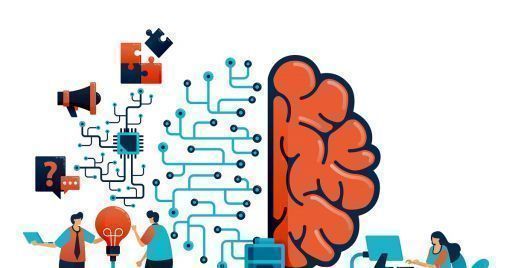

eLearning: how to improve knowledge retention
8 ways to help learners memorize information learned in an online course and retain it over time.
eLearning: how to improve knowledge retention
8 ways to help learners memorize information learned in an online course and retain it over time.
Contrary to what is normally thought, the effectiveness of an online course is not defined only by completion rates. In fact, a course is only effective when the learner is able to memorize and retain the knowledge learned over time.
The good news is that there are strategies to help students memorize information and beat the forgetting curve. In this article, we will provide you with 8 ways to improve knowledge retention in an eLearning course.
Forgetting curve
But let's start at the beginning: what is the curve of forgetting? According to the theory of German psychologist Hermann Ebbinghaus, when we make no effort to retain it, learned information is forgotten as time passes. More precisely, after twenty minutes we have already lost 40 percent of what we have learned; after one day, only 30 percent of the learning remains; and after 7 days we forget 90 percent of what we have learned.
As discouraging as it may sound, however, it must be considered that none of us is powerless against the forgetting curve, neither the student nor the course designer. In fact, there are specific strategies that improve the retention of learned knowledge.
8 knowledge retention strategies
1. Microlearning
Microlearning is one of the most effective learning methods in terms of knowledge retention, as it provides a counterbalance to our diminishing attention span. Because of its short content, it makes learning more digestible for students and more resistant to distraction. Finally, it does not give room for redundant information that can bore or tire students, thus avoiding cognitive overload.
2. Social learning
Although online education offers many benefits, such as the ability to access learning content independently (anytime and from anywhere), one of the main disadvantages is the lack of a community. To make up for this lack, many LMSs provide specific "social" features that enable the creation of discussion groups, chats, forums, etc.
Encouraging discussions about learning content can be as important as the learning itself. This, in fact, provides the student with an opportunity to reinforce the content, helping them to memorize information and cover any knowledge gaps.
This will lead students to better results. In addition, healthy competition makes the learning experience more memorable, encouraging greater knowledge retention.
3. Hands-on projects and collaborative activities
Another way to help students retain information is to encourage practice, such as assigning students a creative project to work on in teams, or assigning role-plays in which students have to handle real-world situations.
4. Graphics
Several studies have shown that visuals are more effective for long-term memory than auditory content, which works better for short-term retention. In fact, visual elements help students connect information and understand contrasting concepts or complex processes.
For this reason, we recommend that you:
- include diagrams, charts and infographics in your course to present information in a more appealing way
- use vivid or contrasting colors
- add animations and interactive elements to capture students' attention
But that's not all: remember that a cluttered user interface and content that is not presented following a logical sequence can upset and frustrate students, compromising the entire learning experience. To avoid this confusion in your online course, reduce visual noise with simple, easy-to-read fonts, a 2- or 3-color palette, and familiar navigation buttons.
For further discussion, also read " How to use visuals to enhance learning".
5. Interactivity
Ensuring that your courses are interactive not only reduces boredom but also makes students active rather than passive in their learning. Adding quizzes, video chats, and group activities encourages students to pay attention, use what they have just learned, and apply it in real time.
6. Gamification
Gamification is the application of game mechanics to non-game environments. The rise of gamification in recent years has been phenomenal. From experience points and leaderboards to badges, challenges and levels, there seems to be an endless supply of game mechanics that we can use to our advantage within online learning solutions.
Because playfulness increases student engagement, it is a fantastic tool for cultivating knowledge retention. After all, the more students interact with (and return to) content, the more they get out of their learning experience.
7. Virtual and augmented reality
A similar argument applies, to an even greater extent, to the elements of virtual and augmented reality, which help create learning environments that are always immersive, holding our attention much longer.
8. Spaced repetition
Another very effective technique is spaced repetition, whereby the student reviews and recalls the information learned at regular intervals. But how to apply it? For example, you can initiate discussions on previously discussed topics, in addition to the current ones, or introduce here and there a few modules aimed at summarizing and reiterating the information provided so far.
You can also add eLearning assessments without assessment during the course to enable simultaneous review and self-assessment.
Translated with www.DeepL.com/Translator